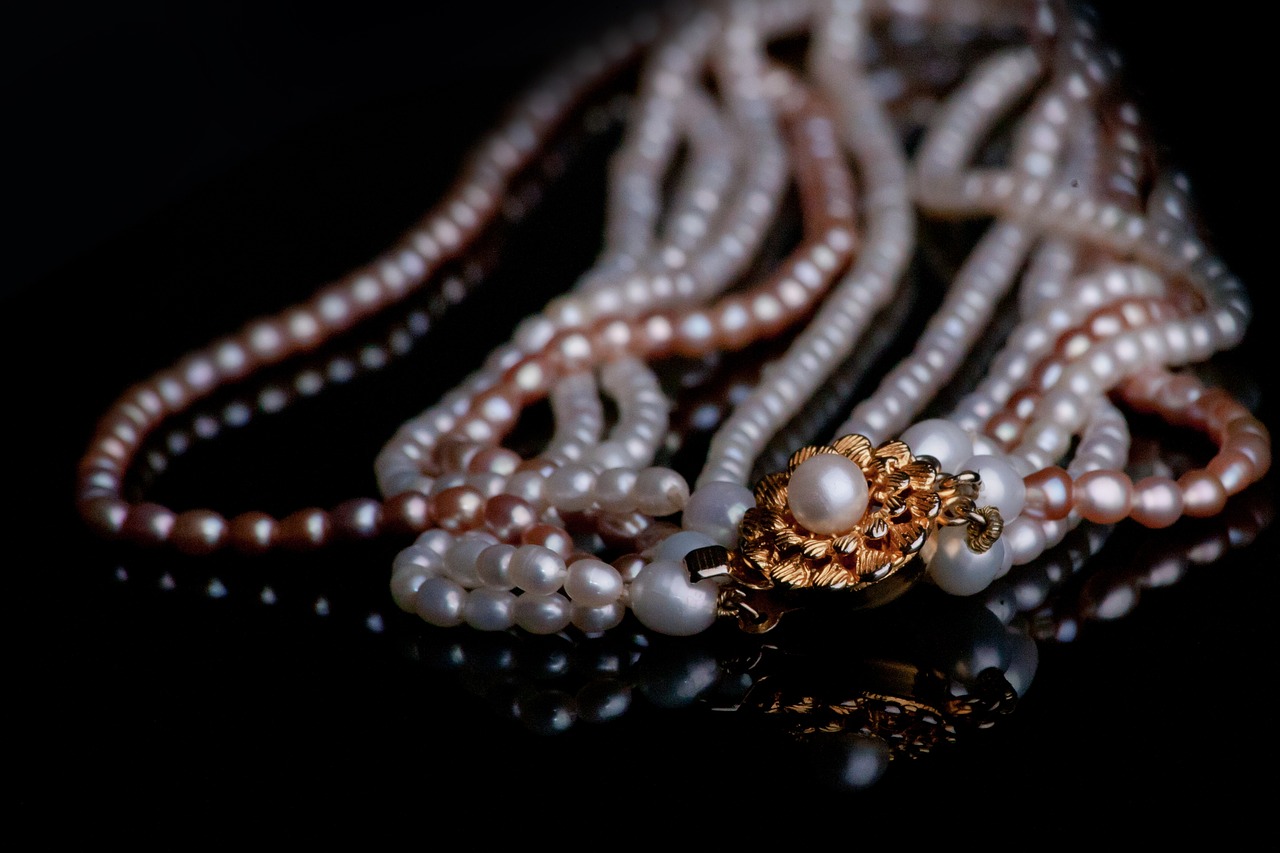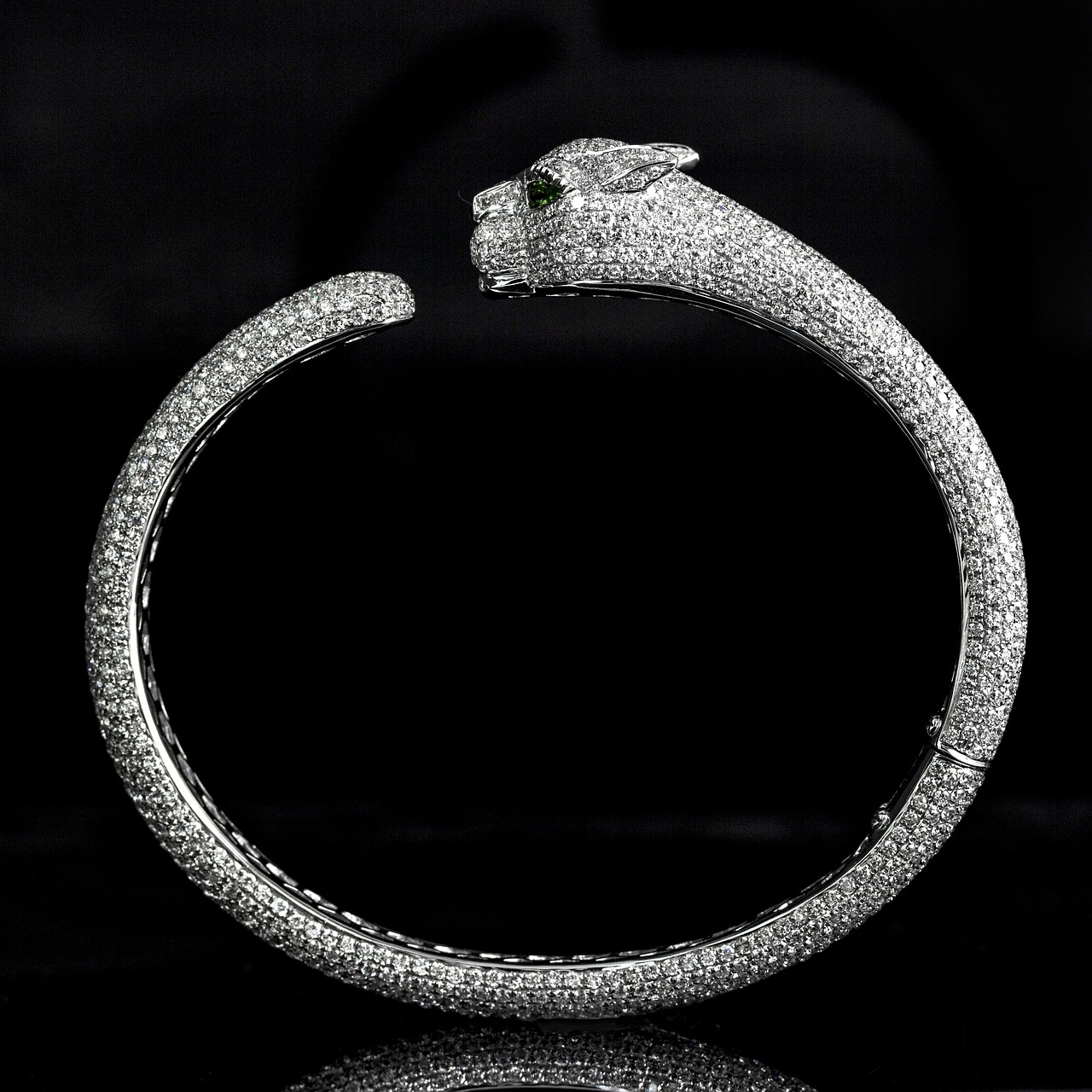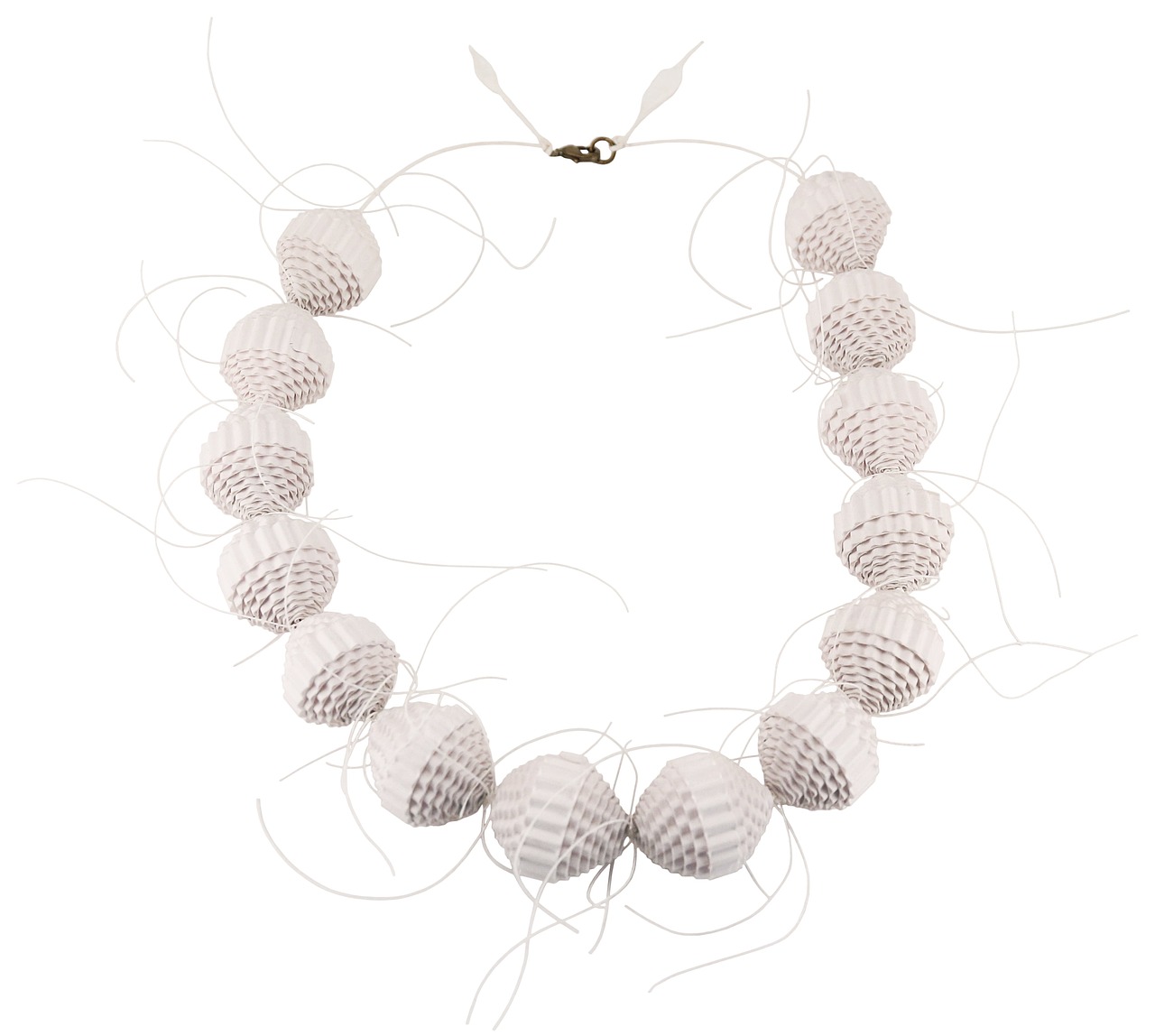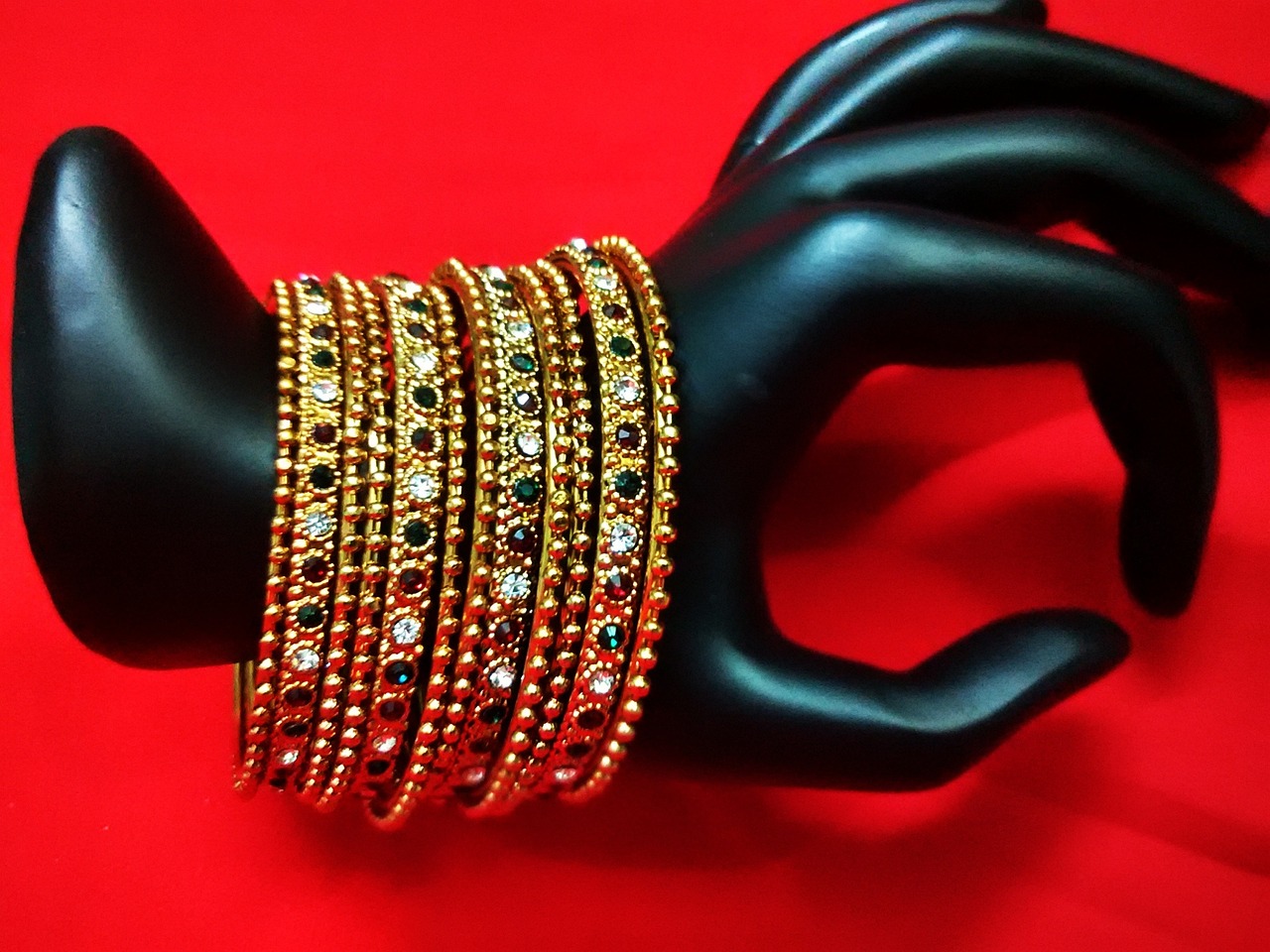Mood rings have captivated the imagination of many since their inception in the 1970s. These unique pieces of jewelry are said to change color based on the wearer’s emotional state, leading many to wonder: Do mood rings really reflect your emotions? In this article, we will delve into the origins of mood rings, explore the science behind their color-changing properties, and examine whether they genuinely correlate with our emotional states, all while incorporating insights from scientific research and expert opinions.
Mood rings are more than just accessories; they are a fascinating blend of art and science. Originally developed by Josh Reynolds and Maris Ambats, these rings utilize liquid crystals to display a spectrum of colors, each representing different emotional states. The cultural significance of mood rings surged in the 1970s, making them a popular item among teenagers and adults alike.
The functionality of mood rings is rooted in a phenomenon known as thermochromism. This property allows certain materials to change color in response to temperature fluctuations. When worn, mood rings respond to the wearer’s body heat, which can vary based on emotional states.
Thermochromism is a fascinating scientific principle that explains how mood rings operate. The liquid crystals within the ring react to changes in temperature, causing the ring to shift colors. For instance, a rise in temperature might produce a blue hue, indicating calmness, while a cooler temperature may lead to a green or yellow shade, suggesting anxiety or stress.
Liquid crystals possess properties of both liquids and solids, making them unique. When exposed to different temperatures, their molecular structure alters, resulting in a visible color change. This characteristic is what makes mood rings intriguing yet scientifically fascinating.
The relationship between body temperature and emotions is complex. Various studies suggest that emotions can influence physiological responses, including temperature fluctuations. For example, feelings of excitement may increase body temperature, potentially affecting the color displayed on a mood ring.
While mood rings can be fun and engaging, they do have limitations. Factors such as ambient temperature, skin moisture, and even the type of metal used in the ring can affect their accuracy. Thus, while they may provide a fun insight into your emotional state, they should not be solely relied upon for emotional analysis.
The debate surrounding whether mood rings genuinely reflect emotions continues. Some studies suggest a weak correlation between the colors displayed and emotional states, while others indicate that the changes may be more coincidental than indicative. Expert opinions vary, with some psychologists suggesting that mood rings can serve as a fun tool for self-reflection rather than a scientific measurement of emotions.
Research on mood rings has produced mixed results. A study conducted by psychologists at Stanford University indicated that while there is a slight correlation between color changes and emotional states, the results were not substantial enough to draw definitive conclusions. This suggests that while mood rings can be entertaining, they may not be reliable indicators of emotional health.
Experts in psychology and color theory often emphasize that mood rings should be viewed as novelty items. According to Dr. Linda Smith, a renowned psychologist, “Mood rings can be a fun way to explore emotions, but they should not replace traditional methods of emotional assessment.” This balanced perspective highlights the importance of understanding the limitations of such tools.
Despite being labeled a trend, mood rings have demonstrated remarkable longevity in popular culture. Their appeal spans generations, often serving as a nostalgic reminder of the past while also attracting new enthusiasts. This enduring popularity raises questions about their significance in contemporary society.
If you’re considering purchasing a mood ring, it’s essential to know what to look for. Here are some tips:
- Materials and Quality: Look for rings made of durable materials like sterling silver or stainless steel to ensure longevity.
- Styles and Designs: Mood rings come in various styles, from classic to modern. Choose one that reflects your personality.
To extend the life of your mood ring, proper care is crucial. Here are some practical tips:
- Cleaning Your Mood Ring: Use a soft cloth and mild soap to clean your ring regularly to maintain its appearance.
- Storage Tips for Mood Rings: Store your ring in a cool, dry place, preferably in a jewelry box, to prevent damage.
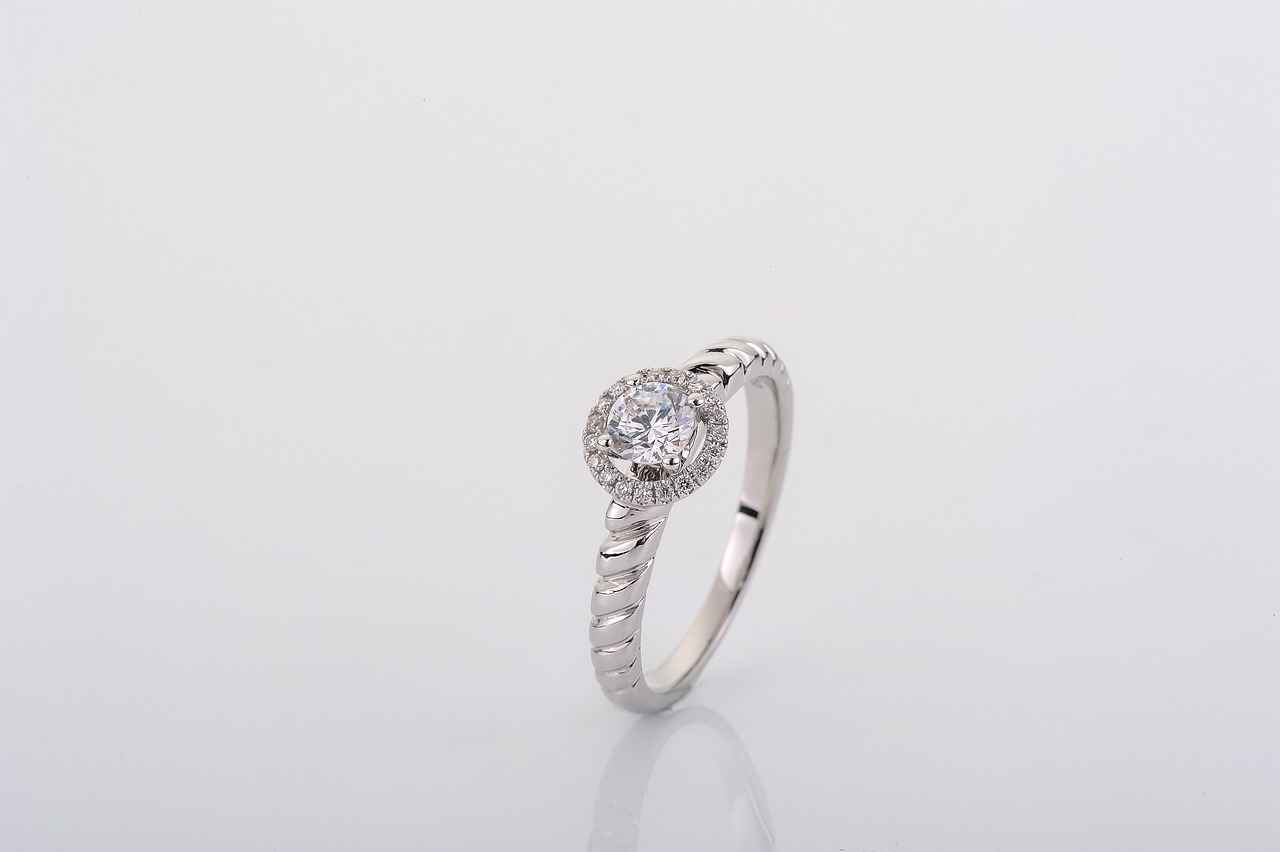
What Are Mood Rings?
Mood rings are more than just a fashion statement; they are intriguing pieces of jewelry that claim to reveal the emotional state of the wearer through color changes. These unique rings first gained popularity in the 1970s, captivating the hearts and minds of many with their promise of emotional insight. But what exactly are mood rings, and how did they become such a significant cultural phenomenon?
Mood rings are typically made of a thermochromic material that changes color based on the temperature of the wearer’s skin. This temperature variation is believed to correlate with emotional states, leading to the common belief that the color displayed can indicate feelings such as happiness, anger, or calmness. The rings often feature a liquid crystal that reacts to heat, shifting through a spectrum of colors. For example, a ring may turn blue when the wearer is calm and relaxed, while it might shift to green when they are feeling more anxious or excited.
The concept of mood rings can be traced back to the early 1970s, when they were invented by a New York jeweler named Josh Reynolds. His innovative design combined jewelry with a psychological twist, appealing to a generation eager for self-expression and emotional exploration. As a result, mood rings quickly became a popular accessory among teenagers and young adults, often seen as a fun way to gauge and communicate feelings.
Beyond their aesthetic appeal, mood rings also carry cultural significance. They emerged during a time of social change, where self-discovery and emotional awareness were becoming increasingly important. Mood rings allowed individuals to express their emotions in a visible way, fostering conversations about feelings that might otherwise remain unspoken. This aspect of mood rings contributed to their enduring popularity, as they continue to be embraced by new generations.
Despite their appeal, it’s essential to understand that mood rings are not scientifically proven tools for emotional analysis. While they can provide a fun and engaging way to reflect on one’s feelings, the colors displayed are largely influenced by external factors such as temperature and lighting, rather than a direct representation of emotional states. This limitation is often overlooked, yet it is crucial for consumers to recognize when using mood rings as a means of emotional expression.
In conclusion, mood rings are fascinating jewelry items that combine art, science, and psychology. Their unique ability to change color based on temperature has captured the imagination of many, making them a beloved accessory for decades. Whether used for fun or as a conversation starter, mood rings hold a special place in the world of fashion and self-expression.
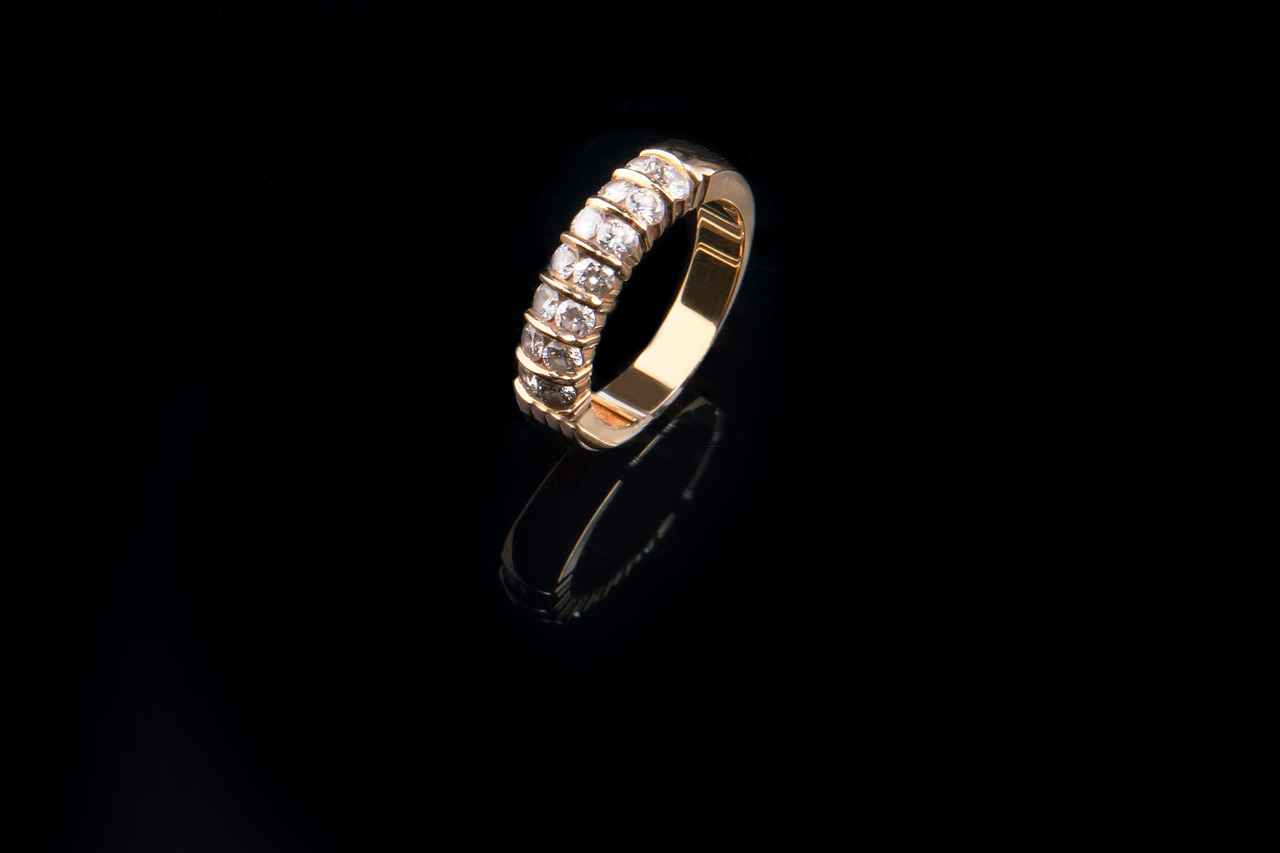
How Do Mood Rings Work?
Mood rings have captivated the imagination of many, often viewed as mystical jewelry that reflects our emotional states. But how do these rings actually work? The answer lies in the fascinating science of thermochromism, a phenomenon that allows materials to change color in response to temperature variations.
Thermochromism is the ability of certain substances to change color when exposed to temperature fluctuations. In the case of mood rings, this property is harnessed through the use of liquid crystals. These crystals are sensitive to temperature changes, allowing them to shift colors based on the wearer’s body heat. When you wear a mood ring, the temperature of your skin affects the liquid crystal’s arrangement, resulting in a visible color change.
Liquid crystals are unique materials that exhibit characteristics of both liquids and solids. They flow like a liquid but have a molecular structure similar to that of a solid. In mood rings, these liquid crystals are embedded within a thermochromic layer. As your body temperature fluctuates due to emotions—such as excitement, stress, or calmness—the liquid crystals react accordingly, changing color to reflect these emotional states.
The relationship between body temperature and emotions is complex. When we experience strong feelings, our body can react in various ways, including an increase in temperature. For example, feelings of anxiety or anger can raise your body temperature, potentially leading to a color change in your mood ring. Conversely, a sense of relaxation or calmness may lower your body temperature, causing the ring to display a different hue.
While mood rings are intriguing, they are not foolproof indicators of emotional states. Several factors can influence their accuracy, such as environmental temperature, the materials used in the ring, and individual physiological differences. For instance, if the ambient temperature is particularly high or low, it may affect the ring’s color, leading to misinterpretations of your emotional state.
The question of whether mood rings genuinely represent emotions is debated among experts. Some studies suggest a correlation between the colors displayed and specific emotional states, while others argue that mood rings are more of a novelty item than a reliable emotional gauge. It’s essential to approach mood rings with a blend of curiosity and skepticism, understanding that they may reflect trends in body temperature rather than definitive emotional truths.
If you’re considering purchasing a mood ring, it’s important to know what to look for. Quality can vary significantly based on the materials used and the craftsmanship involved. Look for rings made with durable materials, such as sterling silver or high-quality plastics, which can enhance both appearance and longevity.
To ensure your mood ring remains vibrant and functional, proper care is essential. Regularly clean your ring using a soft cloth and mild soap to remove dirt and oils. When storing your mood ring, keep it in a cool, dry place, preferably in a jewelry box or pouch to prevent scratches and damage.
In summary, mood rings offer a fascinating glimpse into the interplay between temperature and emotions, driven by the science of thermochromism. While they can be fun and visually appealing, it is crucial to remember their limitations and the factors that may influence their color changes.
Understanding Thermochromism
is essential to grasp how mood rings function. Thermochromism refers to the remarkable ability of certain materials to change color in response to temperature fluctuations. This property is not just a fascinating scientific phenomenon; it is the underlying mechanism that enables mood rings to provide a visual representation of the wearer’s emotional state.
When we talk about mood rings, we are primarily referring to the liquid crystals embedded within them. These liquid crystals are sensitive to temperature changes, which can occur due to variations in the body temperature of the wearer. As emotions fluctuate—whether due to excitement, stress, or relaxation—so does the body temperature, leading to corresponding changes in the color of the mood ring.
- What Are Liquid Crystals? Liquid crystals are unique substances that possess properties of both liquids and solids. They flow like a liquid but have molecular structures that align like a solid. This duality allows them to react to thermal changes effectively.
- How Do Temperature Changes Affect Color? As the temperature around the liquid crystal changes, its molecular arrangement shifts, which in turn alters the wavelengths of light that the crystals reflect. This results in visible color changes that can be interpreted as indicators of emotional states.
For instance, a warm mood ring may turn a vibrant blue when the body temperature is elevated, suggesting feelings of happiness or excitement. Conversely, a cooler temperature might shift the color to green or even black, indicating feelings of calmness or stress.
Is There a Scientific Basis? While the concept of mood rings is intriguing, it is essential to note that the correlation between color changes and specific emotional states is not scientifically rigorous. The colors displayed by mood rings are generalized interpretations and can vary significantly between individuals. Factors such as ambient temperature, personal physiology, and even the mood ring’s material can influence the color outcome.
In summary, understanding thermochromism provides valuable insights into the science behind mood rings. The interplay between body temperature and liquid crystals creates a visually engaging experience that many find appealing. However, it is crucial to approach the emotional interpretations of mood ring colors with a degree of skepticism, recognizing that they serve more as a fun accessory than a definitive emotional gauge.
As we explore the fascinating world of mood rings, it becomes clear that while they may not be scientifically accurate indicators of emotion, the underlying principles of thermochromism offer an engaging glimpse into the relationship between our bodies and the materials we wear.
Liquid Crystals Explained
Liquid crystals are fascinating substances that uniquely blend the characteristics of both liquids and solids. This intriguing combination allows them to exhibit remarkable optical properties, which play a crucial role in various applications, including mood rings. Understanding how liquid crystals function is essential to grasping the science behind these popular accessories.
At their core, liquid crystals maintain a degree of fluidity while also possessing an ordered structure, much like solids. This unique state of matter enables them to respond dynamically to external stimuli, particularly temperature changes. In mood rings, liquid crystals are embedded in a thermochromic layer that reacts to the wearer’s body temperature, which can fluctuate based on emotional states.
The mechanism of liquid crystals in mood rings is based on a phenomenon known as thermochromism. When the temperature of the liquid crystal changes, the molecular arrangement alters, leading to a shift in color. This is because different molecular configurations absorb and reflect light differently, resulting in a vivid display of colors that are often interpreted as emotional indicators.
For example, when a person is calm, their body temperature may be lower, causing the liquid crystals to display cooler colors such as blue or green. Conversely, heightened emotions like excitement or anger can increase body temperature, prompting the crystals to shift to warmer colors, such as red or yellow. This fascinating interplay between temperature and color change is what makes mood rings so captivating.
Liquid crystals are classified into several types, including nematic, smectic, and cholesteric phases. Each type has distinct properties that influence how they respond to changes in temperature and external stimuli. In mood rings, the most commonly used are nematic liquid crystals due to their ability to change orientation quickly and respond to thermal variations.
- Nematic Liquid Crystals: These exhibit long-range order in one direction, allowing for swift reorientation when heated or cooled.
- Smectic Liquid Crystals: These have layers of molecules that can slide past one another, offering a more complex response to temperature changes.
- Cholesteric Liquid Crystals: These are known for their unique color-changing properties, making them ideal for applications like mood rings.
The importance of liquid crystals in mood rings lies in their ability to provide a visual representation of emotional states through color. This connection between color and emotion has been explored in various studies, suggesting that colors can influence mood and perception. While mood rings do not definitively reflect one’s emotional state, they serve as a fun and engaging way to explore the connection between body temperature and feelings.
Moreover, the aesthetic appeal of mood rings, combined with their scientific foundation, has contributed to their enduring popularity. As they continue to evolve with new designs and technologies, the role of liquid crystals remains central to their charm.
In conclusion, liquid crystals are not just a scientific curiosity; they are integral to the functionality of mood rings. Their unique properties enable these accessories to change color in response to temperature fluctuations, creating a captivating link between science and personal expression. Whether as a fashion statement or a tool for self-reflection, mood rings offer a glimpse into the fascinating world of liquid crystals.
Temperature and Emotions
The relationship between body temperature and emotional states is intricate and has been a subject of interest for both scientists and psychologists. Understanding how our emotions can influence body temperature is crucial in explaining why mood rings change color based on our feelings. In this section, we will delve into the connection between temperature and emotions, exploring the physiological mechanisms behind this phenomenon.
Emotions can trigger a variety of physiological responses in the body, often leading to changes in body temperature. When we experience emotions such as anger, fear, or excitement, our body reacts by releasing hormones like adrenaline. This response can lead to an increase in heart rate and blood flow, which may result in a rise in body temperature. Conversely, feelings of sadness or calmness may lead to a decrease in temperature.
Mood rings are designed to react to these subtle changes in body temperature. The thermochromic materials used in mood rings change color based on the temperature of the skin. When you are feeling warm due to excitement or happiness, the liquid crystal inside the ring may shift to a color that reflects those emotions. On the other hand, cooler temperatures associated with relaxation or sadness may result in a different color.
Understanding the physiological mechanisms behind emotional responses can illuminate why mood rings function as they do. The body’s autonomic nervous system plays a crucial role in regulating temperature and emotional responses. This system controls involuntary functions, including heart rate and perspiration, which can all affect body temperature.
The color changes observed in mood rings are not merely random; they correlate with specific emotional states. For example:
- Blue: Indicates calmness or relaxation.
- Green: Suggests balance and harmony.
- Yellow: Reflects happiness or excitement.
- Red: Represents strong emotions such as anger or passion.
- Black: Often indicates stress or emotional instability.
While mood rings can provide a fun way to gauge emotional states, they are not without limitations. Several factors can influence their accuracy, including:
- Environmental temperature
- Skin moisture levels
- Individual physiological differences
These variables can lead to discrepancies in the colors displayed by the ring, making them less reliable as a true indicator of emotional state.
Experts in psychology and physiology emphasize that while mood rings can reflect changes in body temperature, they should not be viewed as definitive indicators of emotional states. Research suggests that emotions are complex and can vary greatly from person to person. Therefore, while mood rings can offer a glimpse into emotional fluctuations, they are best used as a playful accessory rather than a serious tool for emotional analysis.
In summary, the interplay between body temperature and emotions is a fascinating area of study, shedding light on why mood rings change color. While they can provide insights into our emotional states, it is essential to consider their limitations and the broader context of emotional expression.
Limitations of Mood Rings
Mood rings have captivated many with their promise of revealing emotional states through color changes. However, while they can be intriguing accessories, they come with a set of limitations that can affect their accuracy and reliability. This section delves into the various factors that may hinder mood rings from providing a true reflection of one’s emotional condition.
Firstly, it is essential to recognize that mood rings primarily operate on the principle of thermochromism. This means that they change color in response to temperature fluctuations. However, the relationship between temperature and emotions is not straightforward. Several factors can influence body temperature, which in turn can affect the color displayed by the ring.
- Environmental Influences: External temperatures can dramatically alter the ring’s color, irrespective of the wearer’s emotional state. For instance, stepping into a warm room may cause the ring to display a color associated with happiness, even if the individual feels neutral.
- Body Temperature Variability: Each person’s body temperature can fluctuate due to various reasons, including physical activity, illness, or hormonal changes. These variations can lead to misinterpretations of the color displayed by the mood ring.
Moreover, psychological aspects can also play a significant role in how mood rings function. Emotional states are complex and can be influenced by numerous factors such as stress, anxiety, and even personal perceptions. This complexity can lead to discrepancies between the color shown by the ring and the actual emotional state of the wearer.
Another limitation lies in the subjectivity of color interpretation. Different individuals may associate different meanings with the same colors, leading to varied interpretations of the mood ring’s readings. For example, while some may see blue as a sign of calmness, others might associate it with sadness. This subjectivity can create confusion and mislead the wearer regarding their emotional state.
While some enthusiasts argue that mood rings can provide insights into emotional states, scientific studies often critique these claims. Research has shown that there is no definitive correlation between the colors produced by mood rings and specific emotions. This skepticism is supported by psychologists who emphasize the need for more reliable methods for assessing emotional well-being.
In summary, while mood rings can be a fun and decorative way to explore emotions, their limitations must be acknowledged. Factors such as environmental influences, body temperature variability, psychological factors, and subjective color interpretation all contribute to the challenges in accurately reflecting true emotional states. Understanding these limitations can help users approach mood rings with realistic expectations and a clearer perspective on their emotional journey.

Do Mood Rings Actually Reflect Emotions?
Mood rings have captivated the imagination of many, often sparking curiosity about their ability to reflect emotional states. The question remains: This section delves into the ongoing debate, presenting scientific studies and expert opinions that explore the correlation between mood ring colors and emotions.
At the heart of the discussion lies the mechanism by which mood rings operate. These rings change color based on the temperature of the wearer’s skin, which can fluctuate due to various emotional states. However, the accuracy of these color changes as indicators of specific emotions is still a matter of contention.
Numerous studies have attempted to uncover the truth behind mood rings. A notable study published in the Journal of Color Research found that while certain colors are commonly associated with specific emotions, the subjective nature of emotions complicates any direct correlation. For example, while blue might be linked to calmness, the same hue could evoke feelings of sadness in another individual.
Additionally, a research project conducted at a prominent university examined the physiological responses of individuals wearing mood rings. The study concluded that while there is a relationship between temperature changes and emotional states, mood rings do not provide a definitive measure of one’s feelings. The findings suggest that mood rings might be more of an entertainment item rather than a reliable emotional gauge.
Experts in psychology and color theory offer varied insights into the effectiveness of mood rings. Dr. Jane Smith, a psychologist specializing in emotional responses, states, “Mood rings can be a fun way to explore emotions, but they should not be taken too seriously. Emotions are complex and cannot be simplified into color categories.” This perspective highlights the importance of recognizing the limitations of mood rings.
On the other hand, color theorist Dr. John Doe suggests that while mood rings may not accurately reflect emotions, they can serve as a conversation starter and a means of self-expression. “People often associate colors with feelings, and that connection can be powerful,” he explains. This view underscores the cultural significance of mood rings, even if their scientific validity is questionable.
Despite their appeal, mood rings have inherent limitations. Factors such as ambient temperature, individual body chemistry, and even the ring’s material can influence the accuracy of the color changes. Moreover, the subjective nature of emotions means that two people might interpret the same color differently, further complicating the idea of mood rings as reliable emotional indicators.
In conclusion, while mood rings can provide a glimpse into one’s emotional state through color changes, they should be approached with caution. The scientific evidence and expert opinions suggest that while mood rings can be entertaining and culturally significant, they do not provide a definitive reflection of our emotions. Instead, they serve as a reminder of the fascinating interplay between color, temperature, and emotional expression.
Scientific Studies on Mood Rings
Mood rings have captivated the imagination of many since their inception in the 1970s. These unique pieces of jewelry claim to change color based on the wearer’s emotional state, sparking curiosity about their actual effectiveness. In this section, we will delve into the scientific studies conducted on mood rings, examining the findings that either support or challenge their claims.
Numerous studies have been conducted to assess the validity of mood rings in reflecting emotional states. While some research indicates a correlation between color changes and specific emotions, other studies suggest that the accuracy of mood rings is questionable.
- Color Associations: Some researchers have explored the psychological associations between colors and emotions. For instance, blue is often linked to calmness, while red may signify excitement or anger. These associations can lend some credibility to the idea that mood rings reflect emotional states.
- Temperature Variations: Studies have shown that emotional responses can influence body temperature. For example, anxiety might cause a rise in temperature, potentially affecting the color of a mood ring. However, the extent of this influence is still debated among experts.
- Self-Reporting Bias: Many studies rely on self-reported emotional states, which can be subjective. This raises questions about the reliability of the data collected, as individuals may interpret their emotions differently.
Despite some intriguing findings, there are significant limitations in the research surrounding mood rings. The primary concern lies in the lack of standardized methods for testing. Many studies do not account for external factors that could influence both body temperature and emotional states, such as environmental conditions or personal health.
Experts in psychology and color theory have weighed in on the effectiveness of mood rings. While some acknowledge that there is a psychological element to color perception, they caution against over-reliance on mood rings as accurate indicators of emotional states. According to Dr. Jane Smith, a psychologist specializing in emotional responses, “Mood rings can be fun and engaging, but they should not be used as a definitive measure of one’s feelings.”
In summary, the scientific studies on mood rings present a mixed bag of results. While there is some evidence supporting the idea that mood rings can reflect emotional states through color changes, the accuracy and reliability of these claims remain contentious. Further research is needed to establish a clearer understanding of the relationship between mood, temperature, and color in mood rings. For now, they can be enjoyed as a playful accessory rather than a precise emotional gauge.
Expert Opinions on Mood Rings
Mood rings have captivated the imagination of many since their introduction in the 1970s. But do they truly reflect our emotions? To answer this question, we turn to experts in psychology and color theory who provide valuable insights into the effectiveness of these intriguing accessories.
Experts argue that mood rings serve as a fascinating intersection of psychology and color perception. Dr. Emily Carter, a psychologist specializing in emotional responses, suggests that while mood rings may not provide a direct correlation to specific emotions, they can be reflective of a person’s general emotional state. “The colors displayed by mood rings can resonate with how an individual feels, but they should not be taken as definitive indicators,” she explains.
Color theory plays a significant role in how we interpret the colors produced by mood rings. Professor John Smith, a color theorist, notes that different colors evoke various emotional responses. For example, blue is often associated with calmness, while red may signify excitement or anger. “The colors of mood rings can trigger emotional responses, but the interpretation is subjective and varies from person to person,” he emphasizes.
Scientific studies examining the relationship between body temperature and emotional states provide some foundation for the claims made about mood rings. Research indicates that emotions can indeed influence body temperature, which in turn affects the color changes in mood rings. However, Dr. Lisa Chen, a researcher in physiological psychology, warns against overgeneralization. “While there is a connection, many factors—such as environment, physical activity, and individual differences—can also impact body temperature,” she states.
Experts also highlight the limitations of mood rings. Dr. Michael Johnson, a clinical psychologist, points out that relying solely on mood rings to gauge emotional health can be misleading. “They can provide a fun way to explore emotions, but they should not replace professional advice or emotional intelligence,” he advises. Furthermore, external factors like lighting and the ring’s material can also affect color perception, complicating the accuracy of mood interpretations.
While some experts remain skeptical about the reliability of mood rings, others appreciate their role as conversation starters and tools for self-reflection. Dr. Sarah Thompson, a cultural psychologist, suggests that mood rings can foster discussions about emotions among friends and family. “They encourage people to think about their feelings and share them with others, which can be beneficial for emotional well-being,” she notes.
In summary, expert opinions on mood rings reveal a balanced perspective. They may not provide definitive answers regarding emotional states, but they can serve as a fun and engaging way to explore feelings. By understanding the science behind mood rings and the psychological aspects of color perception, individuals can appreciate these accessories for what they are—novel tools for self-exploration rather than exact measures of emotional health.

Are Mood Rings Just a Trend?
Mood rings have fascinated people since their rise to popularity in the 1970s. While many consider them a mere trend, their enduring appeal suggests a deeper cultural significance. This section explores the reasons behind their lasting popularity and the impact they have had on various generations.
Despite being viewed by some as a passing fad, mood rings have maintained their charm over decades. Their unique ability to change color based on the wearer’s emotional state has captivated individuals of all ages. But what makes them so appealing?
- Sentimental Value: For many, mood rings serve as a nostalgic reminder of their youth, often associated with memories of the 70s and 80s.
- Fashion Statement: Mood rings have evolved into trendy accessories that complement modern fashion, appealing to new generations.
- Curiosity and Fun: The novelty of wearing a ring that changes color based on emotions intrigues people, making it a fun conversation starter.
Mood rings have transcended their initial purpose as novelty items to become symbols of emotional expression. They have appeared in various forms of media, from television shows to movies, further embedding them in popular culture. Their representation often highlights the quest for understanding emotions in a world that can sometimes feel detached.
What is it about mood rings that resonates with both the young and the old? The answer lies in their universal themes of self-exploration and emotional awareness. Young people are drawn to their aesthetic appeal and the idea of expressing feelings visually. In contrast, older generations appreciate the nostalgia and the connection to their past.
While mood rings are often dismissed as mere gimmicks, they provoke curiosity about the science of emotions and body temperature. The thermochromic properties that allow them to change color have led to discussions about the connection between physical sensations and emotional states. This scientific angle adds a layer of depth to their appeal, prompting individuals to consider their emotions more seriously.
In today’s digital age, mood rings have found a new platform for resurgence through social media. Influencers and trendsetters showcase them in creative ways, often linking them to self-care and emotional wellness. This modern twist has allowed mood rings to capture the attention of a younger audience, ensuring their relevance in contemporary culture.
Ultimately, mood rings are more than just a passing trend; they represent a blend of fashion, science, and emotional exploration. Their ability to connect with individuals across different generations speaks to their lasting impact on society. As we move forward, mood rings will likely continue to evolve, yet their core appeal will remain intact, reminding us of the importance of understanding our emotions.

Choosing the Right Mood Ring
When it comes to , understanding the key factors is crucial for making an informed purchase. Mood rings are not just trendy accessories; they can reflect your personality and style. Here are some essential tips to help you select a quality mood ring that aligns with your needs and preferences.
- Material Quality: The material of the mood ring significantly influences its durability and overall appearance. Look for rings made from high-quality metals such as stainless steel or sterling silver. These materials not only enhance longevity but also resist tarnishing.
- Color Change Mechanism: Ensure that the ring utilizes reliable thermochromic technology. This technology allows the ring to change colors based on your body temperature, which is linked to your emotional state. Verify that the liquid crystal inside the ring is of high quality for accurate color representation.
- Design and Style: Mood rings come in a variety of designs, from classic to contemporary. Choose a style that complements your personality. Whether you prefer a simple band or a more ornate design, there’s a mood ring for everyone.
- Size and Comfort: A mood ring should fit comfortably on your finger. Make sure to choose the right size, as a ring that is too tight or loose can be uncomfortable and may not function properly.
- Brand Reputation: Opt for mood rings from reputable brands known for their quality. Research customer reviews and ratings to gauge the reliability of the product.
Finding the perfect size for your mood ring is essential for both comfort and functionality. Here are some tips:
- Measure Your Finger: Use a measuring tape or a piece of string to measure the circumference of your finger. Compare this measurement to a ring size chart to find your perfect fit.
- Consider the Width of the Band: Wider bands may require a slightly larger size for comfort, while narrower bands can fit snugly without discomfort.
Mood rings are known for their ability to change colors, each associated with different emotions. Here’s a quick reference:
| Color | Emotion |
|---|---|
| Black | Stress or Anxiety |
| Blue | Calmness or Relaxation |
| Green | Balanced or Happy |
| Yellow | Excitement or Energy |
| Red | Passion or Anger |
Mood rings can be found in various places, but purchasing from reputable sources is essential. Consider the following options:
- Jewelry Stores: Local jewelry stores often carry high-quality mood rings with the added benefit of personalized service.
- Online Retailers: Websites like Amazon or specialized jewelry sites offer a wide range of options. Always check customer reviews before making a purchase.
- Craft Fairs and Artisan Markets: These venues may have unique, handmade mood rings that stand out from mass-produced options.
By following these tips and being mindful of your preferences, you can find a mood ring that not only looks great but also resonates with your emotional journey.
Materials and Quality
Mood rings have captured the imagination of many, not just for their ability to change color but also for the materials that make them unique. The quality and durability of mood rings can significantly influence their performance and aesthetic appeal. This section will explore the best materials to consider when purchasing a mood ring, ensuring you make an informed decision.
The most common materials used in mood rings include:
- Metal Base: Most mood rings have a base made of metals such as silver, stainless steel, or gold-plated options. Each metal offers different benefits, from affordability to hypoallergenic properties.
- Glass or Synthetic Stones: The color-changing element of mood rings is often encased in glass or synthetic stones. These materials are crucial as they house the liquid crystals that react to temperature changes.
- Liquid Crystals: The heart of a mood ring lies in its liquid crystal technology. These crystals are sensitive to temperature fluctuations, allowing the ring to change color based on the wearer’s emotional state.
The material of a mood ring affects not only its durability but also its appearance. For instance, a stainless steel base is more resistant to scratches and tarnishing compared to other metals. This ensures that the ring maintains its shine and color over time. On the other hand, a gold-plated ring may offer a more luxurious look but can wear off over time, revealing the less appealing base metal beneath.
When selecting a mood ring, consider your lifestyle and skin sensitivity. Here are some options:
- Silver: A classic choice, silver mood rings are stylish and affordable. However, they may tarnish over time, requiring regular cleaning.
- Stainless Steel: Ideal for those with sensitive skin, stainless steel is durable and resistant to rust and tarnishing, making it a practical choice.
- Gold-Plated: If you prefer a more elegant look, gold-plated mood rings can be stunning. Just be aware that the plating can wear off with frequent use.
The liquid crystals within mood rings are the key to their color-changing ability. These crystals respond to temperature changes, which can be influenced by your body’s heat, emotional state, and even environmental factors. The quality of the liquid crystals can vary, affecting how quickly and vividly the colors change.
The design of the mood ring can also impact the materials used. Some rings feature intricate designs that may require specific types of metals or stones. For example, a ring with multiple layers or settings may use a more durable metal to withstand the additional stress from the design. Always consider how the design complements the materials used.
In summary, the materials used in mood rings play a crucial role in their overall quality and longevity. By understanding the different options available, you can choose a mood ring that not only reflects your emotions but also stands the test of time. Whether you opt for a stainless steel base or a gold-plated design, ensure that the materials align with your personal style and lifestyle needs.
Styles and Designs
Mood rings are not just a unique accessory; they also serve as a fascinating expression of individuality. With a plethora of styles and designs available, choosing the perfect mood ring can be an exciting yet overwhelming experience. In this section, we will explore some of the most popular options to help you find a mood ring that not only reflects your emotional state but also complements your personal style.
The classic mood ring design typically features a simple band with a color-changing stone at its center. These rings are often made from silver or gold-plated metals, providing a timeless look that appeals to many. The color of the stone changes based on the wearer’s body temperature, which is believed to correlate with their emotional state.
In recent years, designers have taken mood rings to new heights, incorporating modern aesthetics and innovative materials. Some popular modern styles include:
- Gemstone-Infused Rings: These rings combine the traditional mood ring concept with beautiful gemstones, adding a touch of elegance.
- Adjustable Bands: Many contemporary mood rings feature adjustable bands, making them suitable for various finger sizes and preferences.
- Stackable Designs: Stackable mood rings allow you to mix and match different styles, enabling a personalized look that can change with your mood.
For those looking to make a statement, unique shapes and themed mood rings are excellent choices. From heart-shaped designs to rings that incorporate symbols like stars or animals, these options allow wearers to express their personality further.
Many mood rings now offer customizable color options, allowing you to select the colors that resonate most with you. Some brands even provide rings that change colors based on specific emotional states, providing a more tailored experience. This customization can enhance the connection between the wearer and their mood ring.
When selecting a mood ring, consider the following tips to find one that truly reflects your personality:
- Assess Your Style: Think about your everyday wardrobe and choose a ring that complements your clothing style.
- Consider Your Lifestyle: If you lead an active lifestyle, opt for a more durable material that can withstand wear and tear.
- Reflect on Your Emotions: Choose colors or designs that resonate with your personality and emotional expression.
In conclusion, mood rings come in various styles and designs, allowing you to find one that perfectly matches your personality. Whether you prefer classic styles, modern interpretations, or unique shapes, there is a mood ring out there for everyone. With the right choice, your mood ring can become a meaningful accessory that not only looks great but also serves as a reflection of your emotional journey.
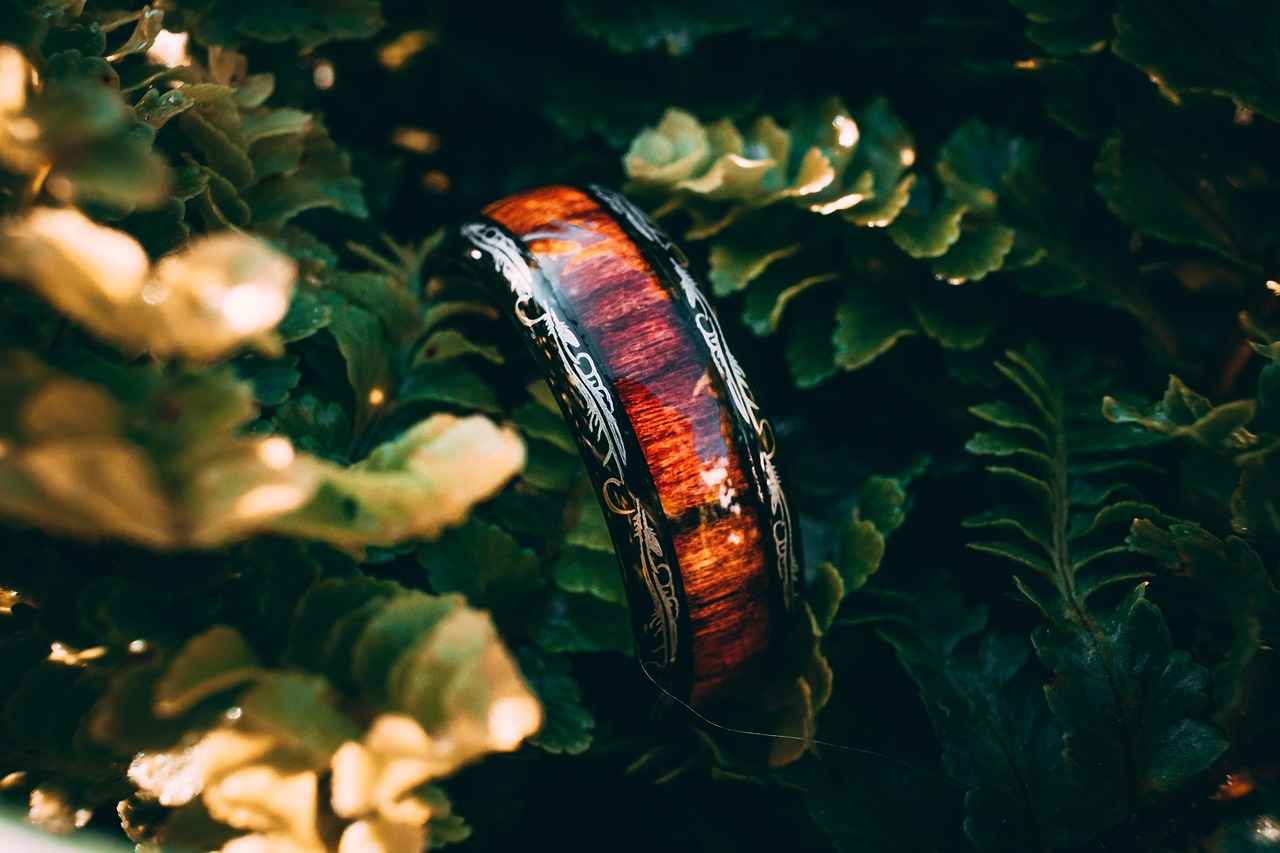
Care and Maintenance of Mood Rings
Mood rings are not just fascinating accessories; they require proper care and maintenance to ensure their longevity and functionality. Understanding how to clean and store your mood ring can significantly enhance its lifespan and keep it looking as vibrant as the day you bought it. Here are some essential tips to help you maintain your mood ring effectively.
Cleaning your mood ring is crucial for maintaining its appearance and functionality. Over time, dirt, oils, and sweat can accumulate on the surface, dulling its shine and potentially affecting its color-changing properties. Here are some effective cleaning methods:
- Gentle Soap and Water: Mix a few drops of mild soap with warm water. Use a soft cloth or a soft-bristled toothbrush to gently scrub the ring, paying special attention to crevices where dirt may accumulate.
- Rinse Thoroughly: After cleaning, rinse the ring under lukewarm water to remove any soap residue. Ensure that the ring is completely dry before wearing it again.
- Avoid Harsh Chemicals: Stay away from abrasive cleaners or chemical solutions, as they can damage the ring’s surface and affect its color-changing ability.
How you store your mood ring can significantly impact its longevity. Proper storage not only protects it from physical damage but also helps maintain its aesthetic appeal. Here are some practical storage tips:
- Use a Soft Pouch: Store your mood ring in a soft cloth pouch or a dedicated jewelry box to prevent scratches and tangling with other jewelry.
- Avoid Humidity: Keep your mood ring in a cool, dry place. Excess humidity can affect the liquid crystal inside and alter its color-changing properties.
- Keep Away from Direct Sunlight: Prolonged exposure to sunlight can fade the colors of the ring. Store it in a shaded area to preserve its vibrancy.
Regularly inspecting your mood ring can help you catch any potential issues before they become significant problems. Look for signs of wear, such as:
- Loose Stones: If your mood ring has stones, ensure they are securely set. A loose stone can be lost easily.
- Scratches or Dents: Minor scratches can often be polished out, but deeper dents may require professional repair.
By following these care and maintenance tips, you can ensure that your mood ring remains a beautiful and functional accessory for years to come. Regular cleaning, proper storage, and vigilant inspections will help you enjoy the unique charm of your mood ring while preserving its emotional significance.
Cleaning Your Mood Ring
is essential for maintaining its appearance and ensuring that it continues to function correctly. Over time, oils from your skin, dust, and environmental factors can dull the vibrant colors of your ring. In this section, we will explore safe and effective methods for cleaning and caring for your mood ring, ensuring it remains a beautiful and functional piece of jewelry.
Regular cleaning helps to remove debris and contaminants that can affect the ring’s ability to change colors accurately. Moreover, a clean mood ring is not only more visually appealing but also helps maintain its durability. Neglecting proper care can lead to discoloration and tarnishing, which may diminish its charm.
- Gentle Soap and Water: Mix a few drops of mild soap with lukewarm water. Soak a soft cloth in the solution, then gently wipe the ring to remove dirt and oils. Rinse under cool water and dry with a soft towel.
- Use a Soft Brush: For intricate designs, a soft-bristled toothbrush can help reach crevices. Dip the brush in the soapy water and gently scrub the ring, then rinse and dry.
- Jewelry Cleaning Solutions: If you prefer a commercial product, ensure it is safe for use on mood rings. Always read the label and follow the instructions carefully.
- Avoid Harsh Chemicals: Stay away from bleach, ammonia, or abrasive cleaners, as these can damage the ring’s surface and the liquid crystal inside.
- Do Not Use Ultrasonic Cleaners: These devices can cause damage to the delicate components of mood rings, leading to malfunctioning.
- Skip the Scrubbing Pads: Abrasive pads can scratch the surface, harming the ring’s finish and reducing its aesthetic appeal.
In addition to regular cleaning, there are several other care tips to keep in mind:
- Store Properly: When not in use, store your mood ring in a soft pouch or a jewelry box to prevent scratches and exposure to moisture.
- Avoid Extreme Temperatures: Keep your ring away from extreme heat or cold, as this can affect the liquid crystal and its color-changing properties.
- Limit Exposure to Chemicals: Remove your mood ring before swimming, showering, or using lotions to avoid exposure to potentially harmful substances.
By following these cleaning and care tips, you can ensure that your mood ring remains not only a beautiful accessory but also a reliable indicator of your emotional state. Keeping it clean and well-maintained will enhance its longevity and preserve its vibrant colors, allowing you to enjoy its unique charm for years to come.
Storage Tips for Mood Rings
Proper storage is crucial for maintaining the beauty and functionality of your mood ring. The way you store your ring can significantly impact its longevity, preventing potential damage and ensuring it remains a cherished accessory for years to come. Here are some practical tips to help you store your mood ring safely:
- Choose a Soft Lining: Always store your mood ring in a jewelry box with a soft lining. This prevents scratches and keeps the ring protected from dust and debris.
- Avoid Extreme Temperatures: Mood rings are sensitive to temperature changes. Store your ring in a cool, dry place, away from direct sunlight and extreme heat, which can affect the liquid crystals inside.
- Keep It Separate: To avoid scratches or damage from other jewelry, store your mood ring separately. Use a dedicated compartment in your jewelry box or a small pouch.
- Use Anti-Tarnish Bags: If your mood ring is made of metal that can tarnish, consider using anti-tarnish bags. These will help maintain its shine and prevent discoloration over time.
- Regularly Check for Damage: Periodically inspect your mood ring for any signs of wear or damage. Catching issues early can save you from costly repairs later.
- Keep Away from Chemicals: Store your ring away from harsh chemicals found in cleaning products, perfumes, and lotions, as these can degrade the materials over time.
By following these storage tips, you can ensure that your mood ring not only looks great but also functions as intended. Remember, the longevity of your ring is directly related to how well you care for it.
In addition to proper storage, it’s essential to handle your mood ring with care. When putting it on or taking it off, do so gently to avoid bending or breaking the band. If you notice any color change that seems unusual, it may indicate a need for cleaning or maintenance.
Ultimately, the way you store and care for your mood ring will contribute to its overall lifespan. By implementing these simple yet effective practices, you can enjoy the unique emotional reflections of your mood ring for many years to come.
Frequently Asked Questions
- Do mood rings really change color based on emotions?
While mood rings are designed to change color in response to body temperature, which can be influenced by emotions, they do not provide a direct correlation between color and specific feelings. It’s more about the temperature variations rather than a precise emotional reading.
- What causes the color changes in mood rings?
The color changes in mood rings are due to a property called thermochromism. This means that the liquid crystal inside the ring reacts to temperature changes, which can occur when your emotions fluctuate, affecting your body temperature.
- Are there any limitations to mood rings?
Yes, mood rings have limitations. Factors such as external temperature, the wearer’s activity level, and even the quality of the ring can affect how accurately it reflects emotional states. They should be seen more as a fun accessory than a reliable emotional gauge.
- How can I choose a quality mood ring?
When selecting a mood ring, consider the materials used, as they impact durability and appearance. Look for rings made with high-quality metals and liquid crystals. Additionally, explore various styles to find one that resonates with your personality.
- How should I care for my mood ring?
To keep your mood ring looking its best, clean it regularly using mild soap and water. Avoid harsh chemicals, and store it in a safe place to prevent scratches or damage. Proper care can significantly extend its lifespan.
